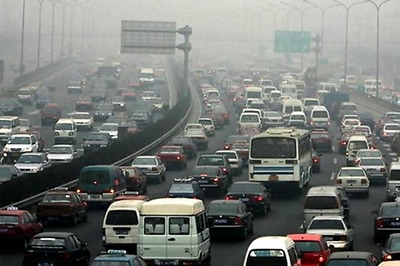
views
The Indian Naval Ship (INS) Kochi returned to the Mumbai harbour on Wednesday morning with dozens of survivors of Barge P305, one of the three barges that were set adrift by Cyclone Tauktae in the Arabian Sea. Captain S Sequeira, the commanding officer of INS Kochi, spoke to CNN-News18 from the deck of the ship about the 36-hour search and rescue operation in nightmarish conditions. Excerpts:
When did you get the SOS call and what was it like racing right into the eye of a storm?
My ship along with others was deployed on the 17th of May, in the early morning, to respond to a distress incident at sea of this barge P305, which unfortunately floundered that evening. The ship had sailed out on the 17th morning, under the intense weather. We had the cyclone that was just passing off Mumbai. And we had very strong winds of about 60 to 80 kilometres an hour in harbour, intense rain, almost blinding rains and very swollen seas. The ship sailed out under these conditions; we had even more adverse weather…when we got out there, the winds going up to 100 kilometres an hour, and wave height, almost 30 feet or nine to 10 metres, that is, all of which makes keeping the ship up and getting her to move in your desired direction rather challenging, and of course, has an implication on safety for the men and of the ship. So I would think that the weather has been, of course, the biggest challenge. That’s not something that we were not expecting, after all we were heading into a cyclone. And we were close to the eye by almost about 50 miles. So this sort of weather is not unusual, but something that we were mentally prepared for, and had to take it on because we were very clear what we had to do and we were out to achieve our mission at all costs.
What was the moment like when the first person you rescued was brought on board?
It was rather challenging, like I said, mainly because you had this very intense weather very, which makes handling a ship very challenging and doing anything on deck very challenging, very risky. But notwithstanding, like I said, we were clear what we had to do. And we had to work out some solution that had to go to meet our end task of rescuing people at sea. So once we were in a situation where unfortunately this barge that had taken water was sinking and finally sank, and we had men…you could see people getting off and getting into the sea. We had just one clear intention that we had to get all of them out. We approached that vessel through our life rafts…we deployed about 14 life rafts on the ship, threw them as close as possible as we could. We circled this barge that had gone down, we started seeing the men jumping off coming towards us. And we had to move in close, very carefully near these people to sort of get our ship as close as possible to these men who were floating and adrift, and to try to recover them. This was very challenging, because like I said, the weather was extremely bad. We had a lot of roll and pitch of the ship. We had water coming in on all sides, we had to have people who were really experienced, who were very positive. And from my side, all our guys were very motivated and were convinced that they had to do this at all costs. Having said that, it was rather challenging to manage this, this pickup. But when we finally got our first man on board, I think all of my men were really elated. They were really confident that with that first success we were going to do much more and we kept at it. We never gave up. Our people were at it right through the evening, the night, the next morning, next afternoon. And we finally managed to do a fairly decent job at the end of it.
You have carried back 185 people who were rescued from barge 305. Did you get a chance to have a conversation with them?
Conversations with people we have rescued…our primary aim, frankly, was to first recover them at sea. And that entire operation from when we started has gone on for almost about 36 hours where the focus of my entire crew has been to recover as many as possible. We’ve been at it, so to be fair, we really haven’t had too much of an opportunity to talk to them. Our primary aim was to get them on board, see that they were physically and mentally fine, which thankfully they were, except for some minor injuries, which our ship’s doctor and our medical team were able to address. We spoke to them only to the extent of ascertaining that they were okay. Like I said, thankfully, they were all fine, mentally very tough. They were all shaken up, undoubtedly, as you would expect somebody in the water in these conditions when you’re being thrown around by the sea, it is not easy. But they managed to stay brave, they managed to stay very confident, and we were very happy. I’m sure they were…I know that many of them were extremely relieved. I don’t want to delve into their emotions. I would say for my ship, my team, and all the men on the ships who are out doing the rescue, they’ve received, I think, a great sense of self-satisfaction, a great deal of relief that we were able to pull off some of the people from the water.
When you recovered these men from sea, were they in rafts, because all barges have rafts as well, or were they in the water?
We found most of the rafts were already damaged, just by pure wave action, and the state of the sea, and the state of the wind. It was that bad. So we had no option but to pick them up from the sea, directly from the water. So most of the men had taken the jump overboard as their barge was going down. But they had donned their lifejackets well, they had followed good procedures by forming in groups. And you see as the night falls, you start seeing the lights on the jackets, which helped us in identifying them and locating them, and then moving in to pick them up. So that was the way we were able to approach and pick them up. But each man had to be picked from the sea, from the water. And from my team standing on the ship, putting out our scramble nets, we have nets that go over the side. And we threw various life-saving devices into the water. We told them to sort of hold on and get them close to us. And then we physically pick them up, pull them up through a net, or some who are fit enough are able to climb up on their own.
Those tracking these rescue operations were wondering how these operations happen at night.
The fact that we were able to rescue the maximum number of people at night is the easy answer or a quick answer to your question. This ship is capable of doing operations by day and night. We do that 24/7, 365 days of the year. But…there is a greater risk involved at night when you have very adverse weather, handling the ship, taking it close to people in the water and you don’t have, I would say, full control of, especially with the elements. But a certain amount of very careful ship handling, a great deal of experience from the seamen to do these sort of operations and careful operation of machinery is what we rely on. The overall sense is your spirit of motivation and self-discipline, and belief in a goal. And that’s what I think would help us finally do what it is that we’re trying to do here.
Read all the Latest News, Breaking News and Coronavirus News here. Follow us on Facebook, Twitter and Telegram.




















Comments
0 comment